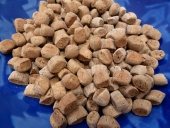
 3
3




 5
5




 3
3




 3
3




 3
3




 2
2




 3
3




 2
2




http://www.yummykefir.com - Milk kefir and water kefir recipes to keep your belly happy.
 2
2




"I - am a thoughtful guy. I think alotta thoughts; about alotta things." Rhett and Link
 2
2




Check out Redhawk's soil series: https://permies.com/wiki/redhawk-soil
 2
2




"Turn your face to the sun and the shadows fall behind you." ~Maori Proverb
www.permi-eden.com
 4
4




My project thread
Agriculture collects solar energy two-dimensionally; but silviculture collects it three dimensionally.
 3
3





Anna D
 3
3




 3
3




Anna Drozdova wrote:I make everything with my starter, bread, pizza, flatbread, pitta bread, pancakes, pan au chocolates, dumplins, even pasta sometimes, pie crusts, it is so diverse and I love it
I blog about fermenting food at My Fermented Foods
 3
3




sortof-almost-off-grid in South Africa: https://www.instagram.com/heartandsoilnoordhoek/
 2
2




Pat B.
 3
3




 2
2




 3
3




Many things last lifetimes or eons, but the only thing that's permanent is the ever-changing flow itself




 6
6




 7
7




 9
9







 3
3




 4
4




Tereza Okava wrote:Last night I made sourdough pita bread, since my sourdough is chugging along doing a loaf or two each week but most of the rest of the time just taking up space in my fridge. I saw a few recipes using starter but most used a tiny bit (20g?). I hunted around til I found one that used way more (250g, baby!). 20g starter is what, a tablespoon?
I am only one, but still I am one. I cannot do everything, but still I can do something; and because I cannot do everything, I will not refuse to do something that I can do. (E.E.Hale)
 2
2




 3
3




M Johnson wrote:
And it tasted like regular bread.
Had more holes than my 5 minute bread but basically same flavor and no sourdough taste.
I am only one, but still I am one. I cannot do everything, but still I can do something; and because I cannot do everything, I will not refuse to do something that I can do. (E.E.Hale)
 2
2




 2
2




M Johnson wrote:First try at sourdough from a starter I made.
And it tasted like regular bread.
Had more holes than my 5 minute bread but basically same flavor and no sourdough taste.
Any suggestions?
 4
4




I am only one, but still I am one. I cannot do everything, but still I can do something; and because I cannot do everything, I will not refuse to do something that I can do. (E.E.Hale)
 3
3




 3
3





 2
2




Lif Strand
New Mexico USA
 2
2




 3
3




 5
5




 2
2









|
Grow a forest with seedballs and this tiny ad:
Homestead Pigs Course
https://permies.com/wiki/365748/Homestead-Pigs
|







